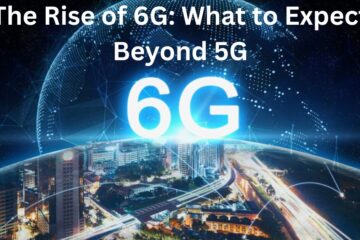The fifth generation of wireless technology, 5G, is not just an incremental upgrade from its predecessors; it represents a revolutionary leap in connectivity. At the heart of this transformation lies the intricate and dynamic architecture of the 5G network. In this comprehensive exploration, we will delve into the key components, principles, and potential applications of this cutting-edge infrastructure.
· Core Network (CN)
The Central Nervous System of 5G
The Core Network (CN) serves as the central nervous system of the 5G network. It is responsible for managing network operations, handling user authentication, and ensuring efficient data traffic management. The CN consists of two critical functions:
- AMF (Access and Mobility Management Function): The AMF plays a pivotal role in user authentication and network registration. It ensures that devices securely connect to the 5G network and roam seamlessly between different network elements.
- SMF (Session Management Function): Responsible for data routing and service delivery, the SMF ensures optimal traffic flow and low latency. This is particularly crucial for applications like autonomous vehicles and augmented reality, where split-second decisions are imperative.
· Radio Access Network (RAN)
The Gateway to Wireless Connectivity
The Radio Access Network (RAN) acts as the bridge between user devices and the core network. RAN comprises three essential components:
- gNB (Next-Generation NodeB): The gNB is the powerhouse behind 5G’s blazing-fast speeds. These advanced base stations wirelessly connect user devices to the network. Equipped with technologies like massive MIMO (Multiple Input, Multiple Output), gNBs ensure high data rates and connectivity density.
- DU (Distributed Unit): DUs handle baseband processing, ensuring efficient data transmission between gNBs and the core network. These units are instrumental in maintaining the network’s low latency and high throughput.
- CU (Centralized Unit): CUs aggregate data from multiple DUs and handle the centralized processing required for advanced network features. They play a pivotal role in optimizing network resources.
· Edge Computing
Bringing Processing Power Closer to You
Edge computing is a transformative aspect of the 5G network. By bringing data processing closer to end-users, it dramatically reduces latency, enabling real-time applications that were once deemed impossible. Edge data centers, strategically positioned at the network’s edge facilitate this capability. They are poised to revolutionize various sectors, including healthcare, transportation, and industrial automation.
· Network Slicing
Tailoring the Network to Specific Needs
Network slicing is an innovation that allows the 5G network to be divided into multiple virtual networks, each customized to meet specific requirements. Whether it’s ultra-reliable low-latency communication (URLLC) for critical applications or enhanced mobile broadband (eMBB) for high-speed data transfer, network slicing ensures that the network adapts to diverse user needs.
· Potential Applications
Envisioning the Future
The architecture of the 5G network opens doors to a multitude of applications across various industries:
- Healthcare: Telemedicine, remote surgery, and real-time patient monitoring have become more accessible with 5G’s low latency and high bandwidth.
- Transportation: Autonomous vehicles rely on 5G for instant communication and data exchange, ensuring safe and efficient transportation.
- Smart Cities: 5G powers intelligent city initiatives, enabling efficient traffic management, smart grids, and connected infrastructure.
- Entertainment: Enhanced mobile broadband provides seamless streaming of high-quality content on the go.
- Manufacturing: The Industrial Internet of Things (IIoT) thrives on 5G, optimizing production processes and predictive maintenance.
Conclusion
The architecture of the 5G network represents a monumental step forward in the realm of connectivity. It is a dynamic ecosystem of components and technologies working in harmony to redefine how we connect and communicate. As we embrace the capabilities of 5G, we stand on the cusp of transformative advancements in nearly every facet of our lives, from healthcare and transportation to entertainment and industry.
For top-notch RF & 5G components solutions, choose SRFS TELEINFRA. Get in touch: Call Us: 7838349349 Or Email Us: info@srfsteleinfra.in



0 Comments